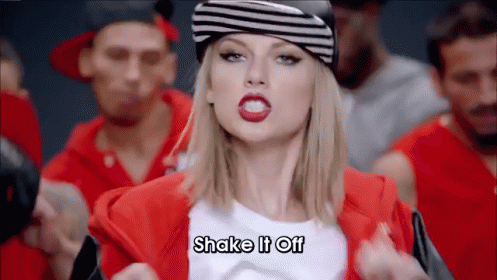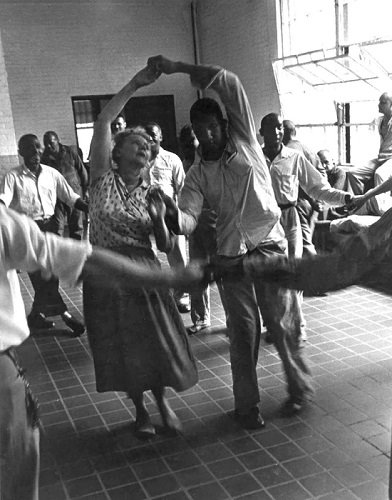Something's bugging you and you're just not ready to let it out. Your friends are worried and take you out for a night on the town and the next day, thank goodness, you feel much better - but was it the company or the alcoholic drinks that made you feel this way? Or was it perhaps something else, like your Michael Jackson moves on the dance floor that snapped you out of your misery?

Dance therapy, (we can also call it dance/movement therapy), employs movement instead of spoken communication. It is used in the treatment of the mentally ill and to enrich the lives of sightless and deaf individuals, especially children. It can be an important aspect of rehabilitation following a stroke or an injury which hinders motion and coordination too. Many adults with emotional or stress-related problems find that dance therapy can provide relief.

In theory, dance/movement therapists should work with individuals who have social, emotional, cognitive and/or physical problems - in psychiatric hospitals, correctional facilities, rehabilitation centres, nursing homes and geriatric centres. Unfortunately, there aren't many of these therapists. An alternative to dance therapy which is worth consideration is curative eurythmy -
Eurythmy is an expressive movement art originated by Rudolf Steiner in conjunction with Marie von Sivers in the early 20th century. Primarily a performance art, it is also used in education, especially in Waldorf schools, and – as part of anthroposophic medicine – for claimed therapeutic purposes.
Source
It works like this:
Participants are encouraged to overcome muscular tensions and to be aware of the way in which their feelings can affect their muscles. With the development of this awareness, they become increasingly capable of the wordless expressions of inner feelings in the form of movement, usually accompanied by music. As the therapy progresses, the movements can later be interpreted and discussed.
Expect the unexpected
Patients or participants are guided to use their bodies in movements that the therapist is trained to interpret. Through rhythmic body language, for example, an autistic child may achieve a sense of physical order which can have a healing effect on the disordered mind and feelings.
Dance therapy which is used to help children with movement disorders, such as cerebral palsy, has multiple goals: to help them gain strength, improve their coordination and experience enjoyable movement free from fear of failure. The same goals apply to an older stroke patient or accident victim as well.

People who are withdrawn can achieve a feeling of connectedness through holding hands in a group and facing other participants. Dance and movement can also have a positive role in the emotional and physical recovery of patients who have survived serious motor car accidents, severe burn injuries or other mishaps that require lengthy rehabilitation and which could leave a permanent disability.
As therapy progresses, those participants may be given an assignment to work on by themselves between sessions, or they may be instructed to prepare a dance improvisation for the therapist and the group to interpret. This is of course also a source of exercise without even realizing it.
Shake it off!

Is this really a thing?
While dance and movement have long been used for expression, recreation and religious rituals, the foundation of the therapy was laid shortly after World War I, when the pioneers in modern dance began to create choreography that expressed inner emotions. At about the same time, new approaches to the treatment of mental illness were developing and therapists increasingly recognized the importance of using body movement as an outlet for emotions that could not be expressed with words.
An early practitioner of dance therapy was Marian Chace, a dance teacher. Having observed that physical movement helped emotionally disturbed children, she began to emphasize their need for expression rather than their mastery of technique. In the 1940's, a psychiatrist who was impressed with Chace's results invited her to work with mentally ill patients. In the years that followed, she received national recognition for her accomplishments and she also demonstrated that through dance and movement patients previously considered hopelessly regressed and withdrawn could engage in group activities and take the first steps towards expressing their feelings, even if they were unable to do so verbally. Other dance therapists appeared on the scene with a variety of techniques, and in 1966, the American Dance Therapy Association was established to set standards.

Resources:
Marian Chace
Dance therapy
Dance movement therapy
Dance movement therapy program

I am not much of a dancer, but i do find that any type of exercise has the same effect on me as you state that dancing does. I find that being sedentary for long periods of time has a very negative effect on my psyche. You should've posted a video of you dancing.
🤣 Well, well, well! Look who has finally decided to join the land of the living again!
Me? Dancing? When hell freezes over maybe!
I wonder how much steem it would cost to bribe the owner of hell to invest in one of those meat-locker freezers.
I haven't done any price checks on that side lately and it might possibly take a lot of convincing...but I wouldn't make a deal with the devil if I were you. It could get ugly, or so I've heard 🤐